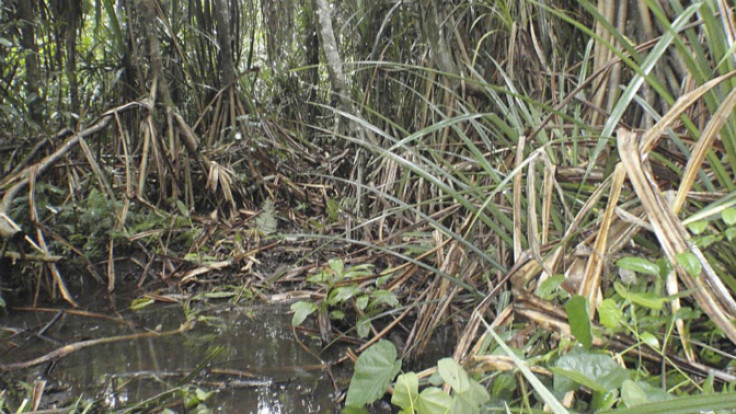African plant points to diamond bearing kimberlite in soil

In what could be a dream come true for diamond prospectors, a thorny plant with stilt-like aerial roots seems to be an indicator species for diamond-bearing kimberlite formations.
Once confirmed, the plant found in Liberia will open a simple way of finding diamond deposits, especially in Africa's thick jungles.
Tentatively identified as P candelabrum, the plant could even be a new species, says Stephen Haggerty, a researcher at Florida International University in Miami and the chief exploration officer of Youssef Diamond Mining Company, which owns mining concessions in Liberia.
He believes the plant has adapted to kimberlite soils, which are rich in magnesium, potassium, and phosphorus. "It sounds like a very good fertilizer, which it is," says Haggerty, who published the discovery in the June-July issue of Economic Geology.
Haggerty first found the plant in 2013 while looking for kimberlite diagnostic minerals. He found the plant growing in the soil on the kimberlite pipe, reports Science.
Similar to mangrove trees in its roots and rising to a height of 10 metres or more, with spiny, palmlike fronds, the plant was used by locals to thatch their roofs.
Plants have been known to exhibit preferences for certain soils, thus signalling ore-bearing rocks.
But the new plant is the first such indicator species for diamond-bearing kimberlite, an igneous-rock matrix composed of carbonate, garnet, olivine, etc with a variety of trace minerals.
Kimberlites form deep in Earth's interior and are brought to the surface by volcanic eruptions in what is referred as kimberlite pipes. On their journey upwards they collect other types of minerals, with diamonds being a major component.
A vast majority of the diamonds mined today is found in kimberlite ores.
Of the more than 6000 known kimberlite pipes in the world, about 600 contain diamonds. Of these, only about 60 are rich enough in quality diamonds to be worth mining. Many situated in thick bushes are difficult to access.
The soil above the pipe where Haggerty first found the plant has already yielded four diamonds: two in the 20-carat range, and two in the one-carat range
Since then, Haggerty has confirmed the presence of the plant at another kimberlite pipe 50km to the southeast, but it does not seem to grow elsewhere.
He plans to evaluate bulk samples of the soil above the first Camp Alpha pipe to see if it is worth mining.
He also proposes to study how the plant and the kimberlite soil exchange nutrients.
If the plant can be identified by satellite imagery, it could help West African diamond prospectors, he believes.
© Copyright IBTimes 2024. All rights reserved.





